Non-Conventional Water Resources – Surface And Subsurface Sources
There are a number of different ways to address a shortage of water:
-
Get equal value from less water (Conservation)
-
Find more water from surface and groundwater sources
-
Have more precipitation (Increase the velocity of water)
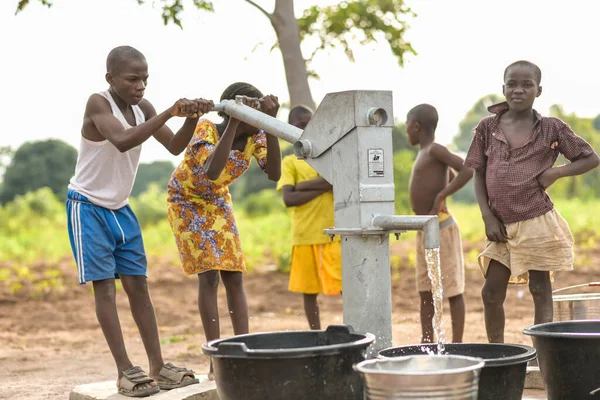
In this article, we discuss “Finding More Water from Surface Water and Groundwater.
Recently, Dr. Bruce M. Thomson, Regents Professor of Civil Engineering gave a very good presentation on this approach. Dr. Thompson gave me permission to write an article on his presentation with my comments, which are mostly explanatory, in boxes.
Let us get started.
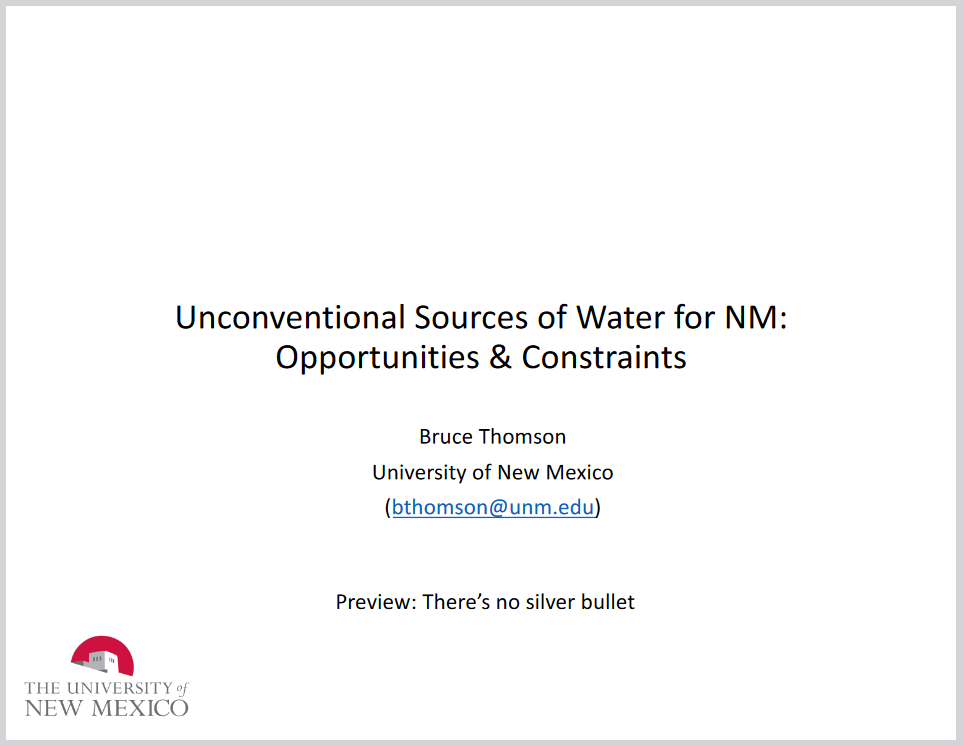
| Bruce is pretty pessimistic that most alternative water sources will play a meaningful contribution to the hole in the budget that we anticipate due to global warming. I tend to agree with him but not totally. He provides a strong argument for his conclusion but I think there may be important niches and separately I will discuss cloud seeding which is widely used in the U.S. West and around the World. I really appreciate the thorough analysis provided by Professor Thomson. |
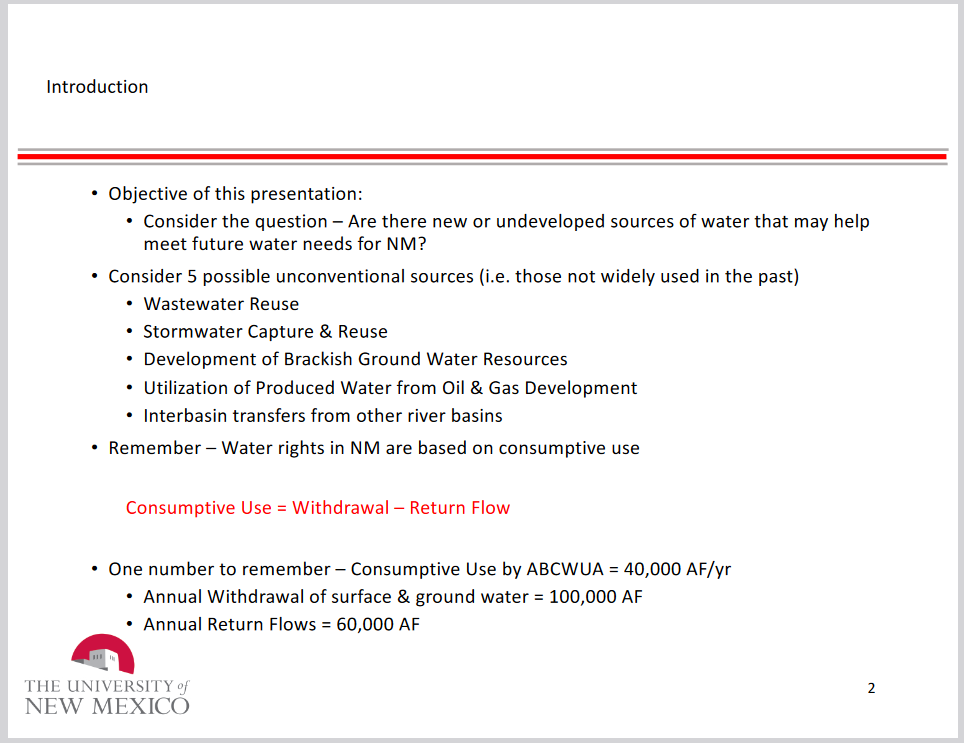
| Bruce covers the major alternative water sources that we think of in the inland West other than cloud seeding which I will cover in a separate article. Many of the sources that Bruce covers involve chemical processing to reclaim the water. I think Dr. Thomson is a civil engineer and a very good one. To have the analysis be real many of the calculations are based on the water being available in Albuquerque NM but the calculation for other locations would be similar but not identical. In the West, we use Acre-feet as a measure i.e. the amount of water to flood an acre one foot deep or 325 851 US Gallon. For stream flows we use cubic feet per second which if sustained for a year would be 723.97 af. |
Some will need to click on “Read More” to access the body of this article which is extremely interesting.

| The above defines the problem for New Mexico and probably this applies to many states. Notice that less precipitation is not the major problem. In general, precipitation is declining near and in the desert belt which is roughly 30 degrees latitude north and south. Further north precipitation is increasing. It is more complicated than what I just said but it is a first approximation to what the models predict. But temperature is increasing everywhere but perhaps more rapidly at higher latitudes. Higher temperatures result in less snow. Winter snow is preferable to rain as it gets stored in the winter for Spring. A longer growing season means plants use more water. So there is less stream flow and more losses due to evaporation. The impacts on biology are complex and not totally clear. But temperature and carbon dioxide stimulate growth. The impact on water use is not totally understood. I will be writing an article on that. |

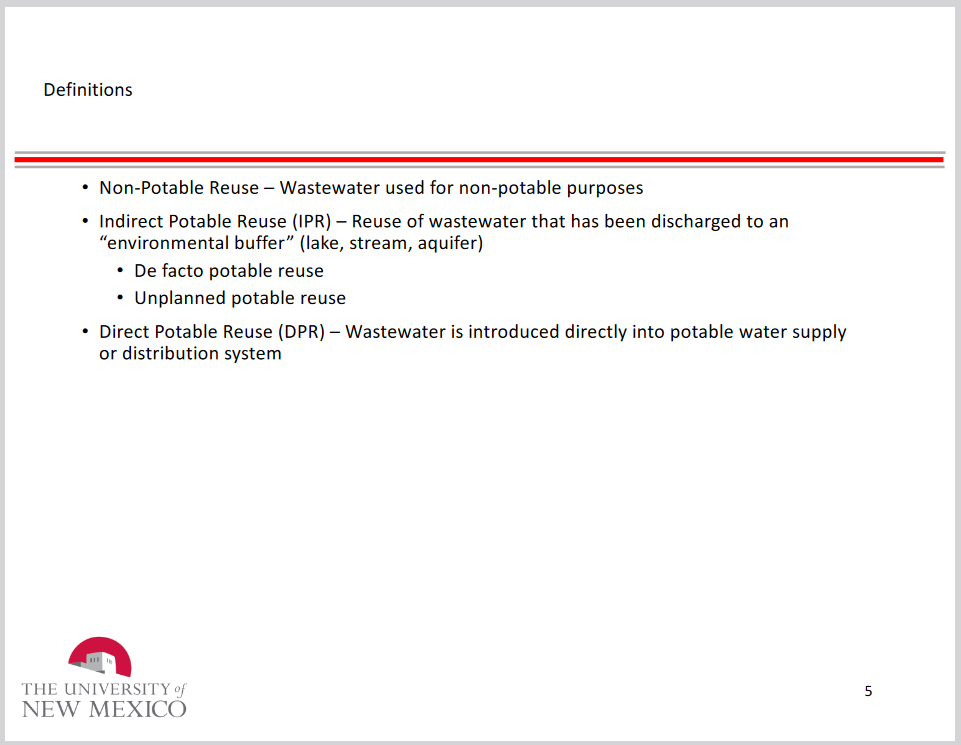
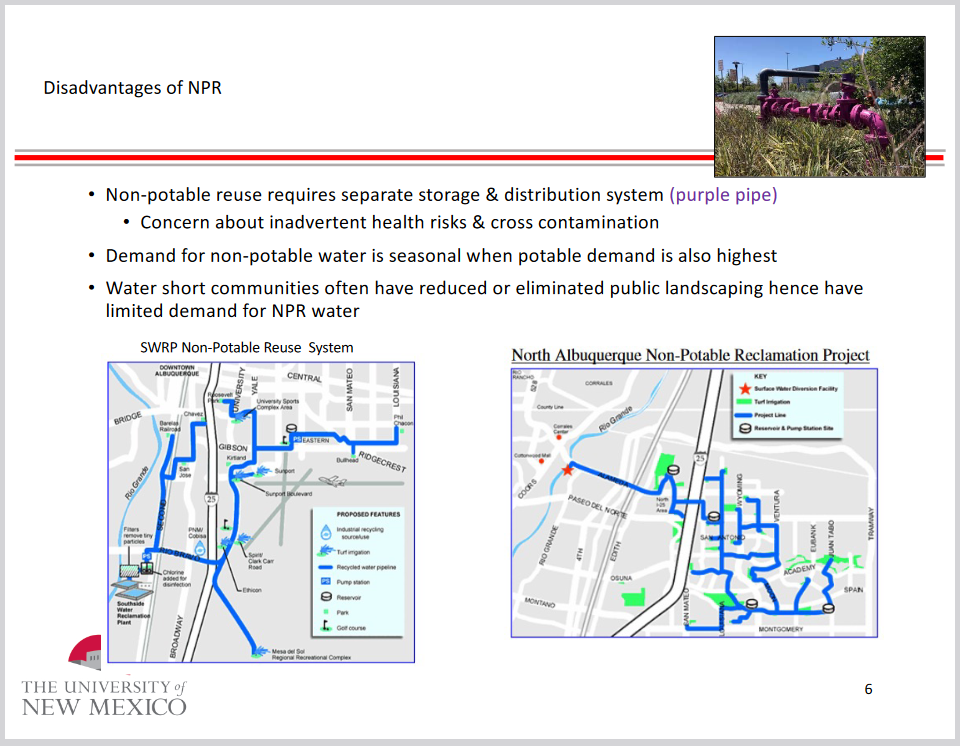
| Here and in some subsequent slides is where Dr. Thomson tries to show the engineering consideration that takes a good idea and shows the engineer constraints to do things economically. |
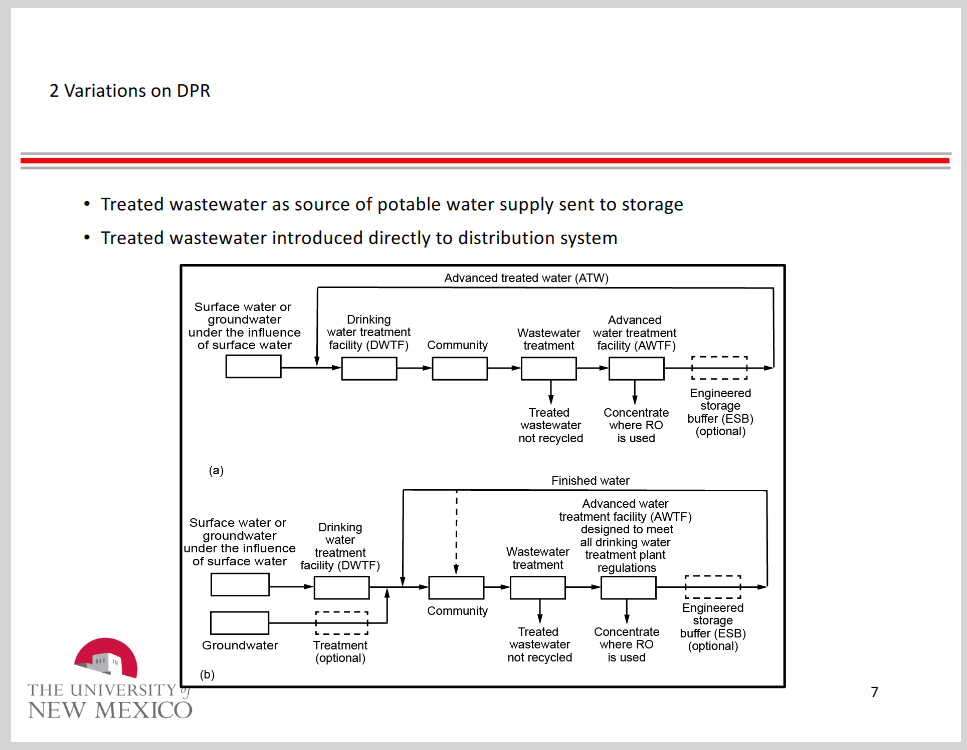


| This is really important. Where there is a return path to a waterway surface or underground, one can just allow the water to return and be used elsewhere. But the water may be higher quality even pretreatment than run of the river water. |
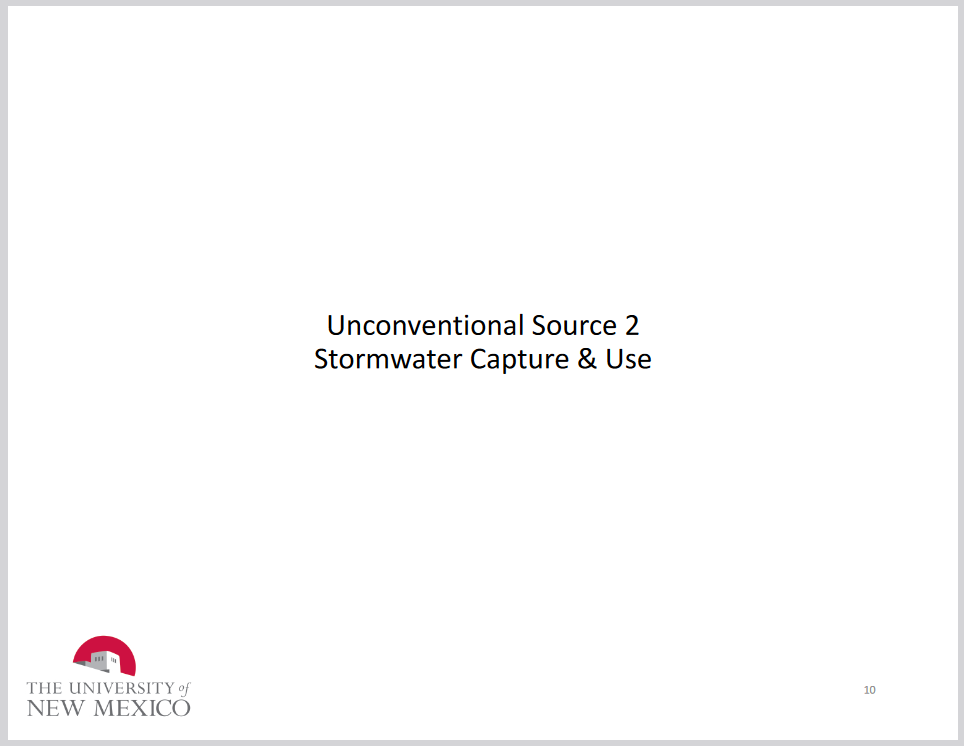
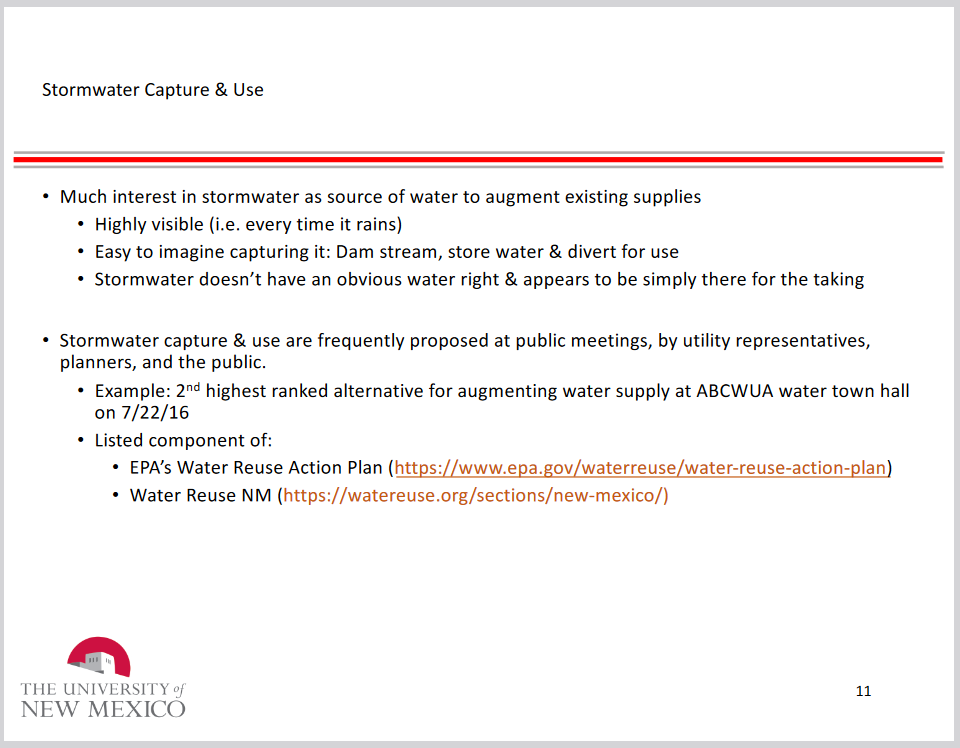

| It varies by state. But in NM two of the major water sources are obligated downstream so stormwater is not available for treatment and reuse. That may be the case on the other rivers in New Mexico also but understanding interstate river compacts is complicated. That is why Dr. Thomson talks about detention which is allowed versus retention. But in some cases, there may be federal laws that require stormwater to be captured to prevent negative impacts on waterways. I do not fully understand the constraints that use the riparian system of low rather than the priority doctrine PD. In a state with the priority doctrine storm capture may be more viable where there are closed basins that do not drain into a stream or river. |

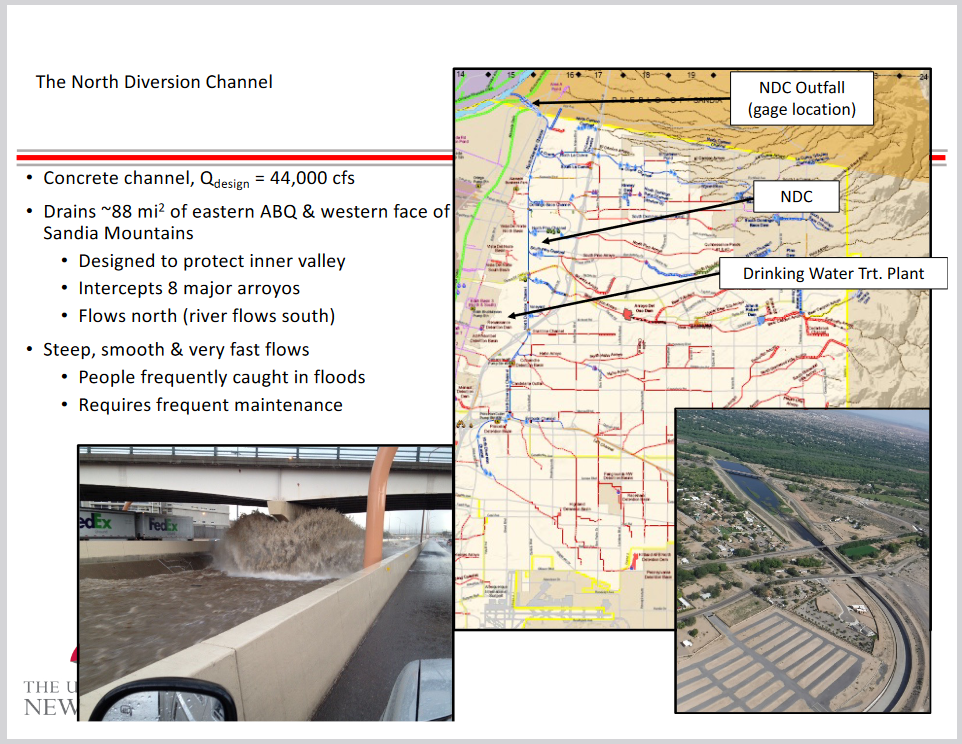
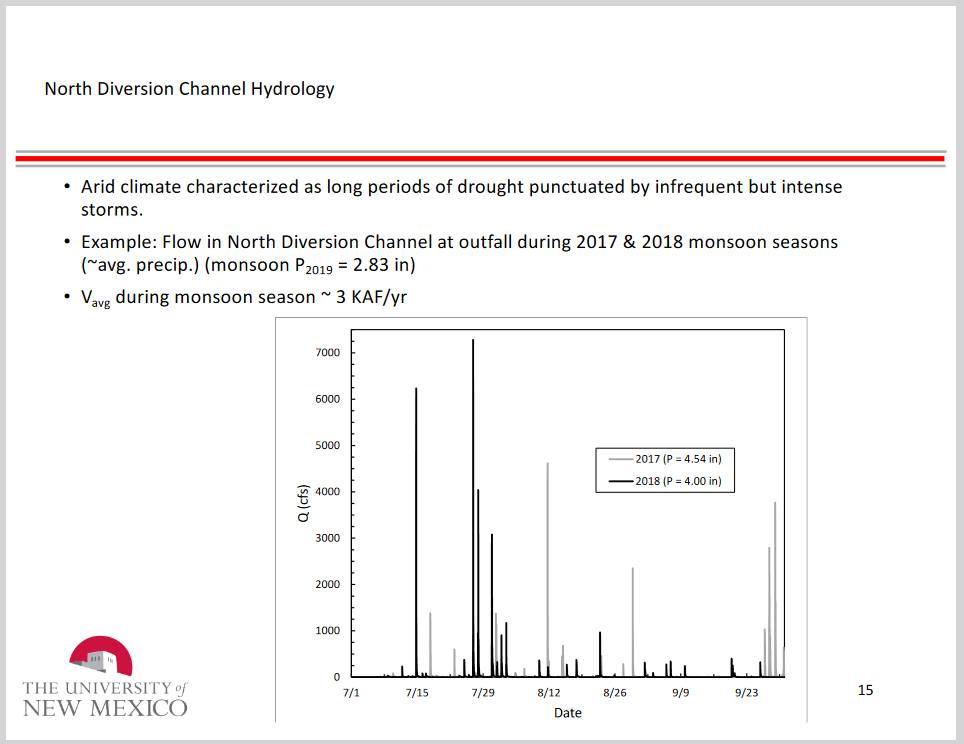
| The key point here is that large runoff events are fairly rare. |
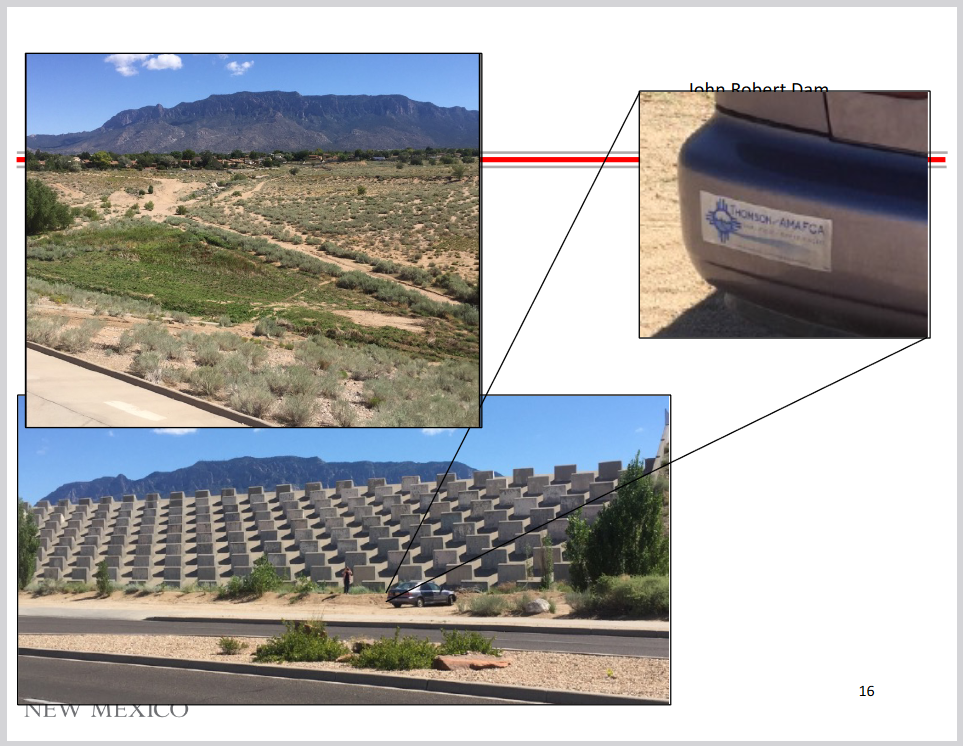

| I am not sure about the first bullet point. Flood control dams are not designed to store water so they really can not be economically modified to store water. |
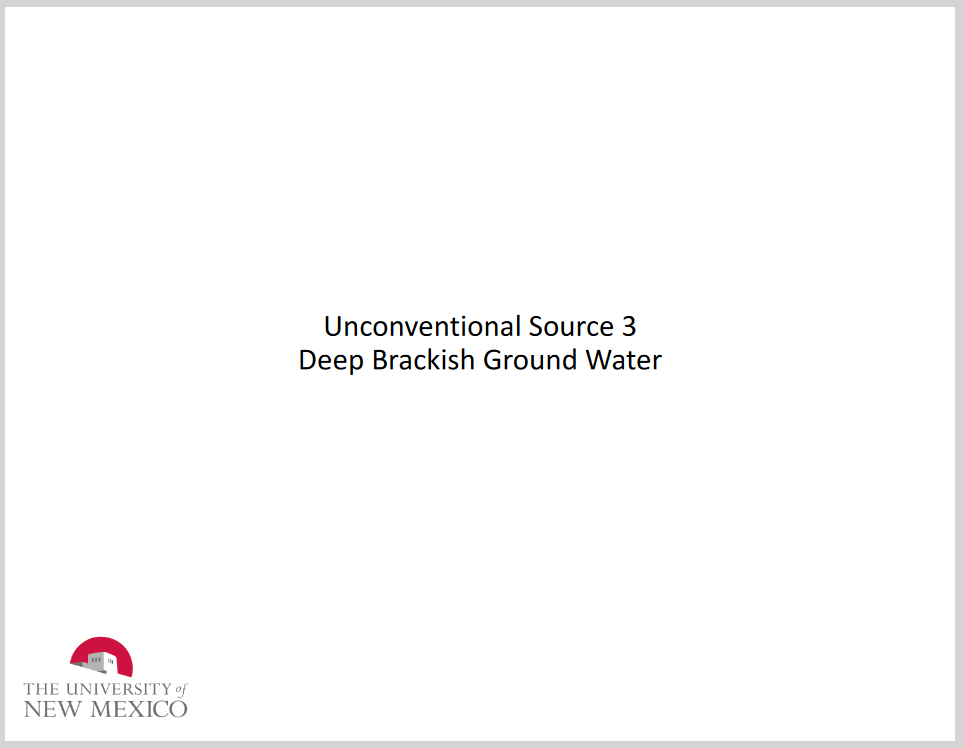
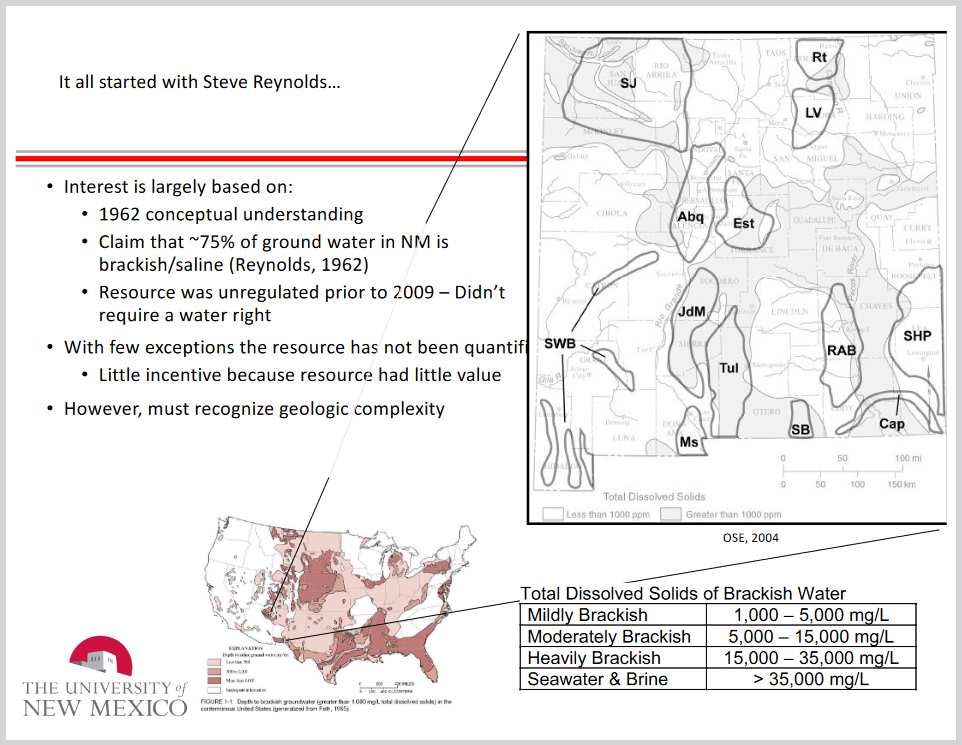
| I have been involved in this issue promoting a brackish water project and the biggest problem was that to be economic you need to pump a lot of water and there is generally not the demand for a large amount of water in one place. The need for more water grows slowly so major new projects can have marketing problems. |
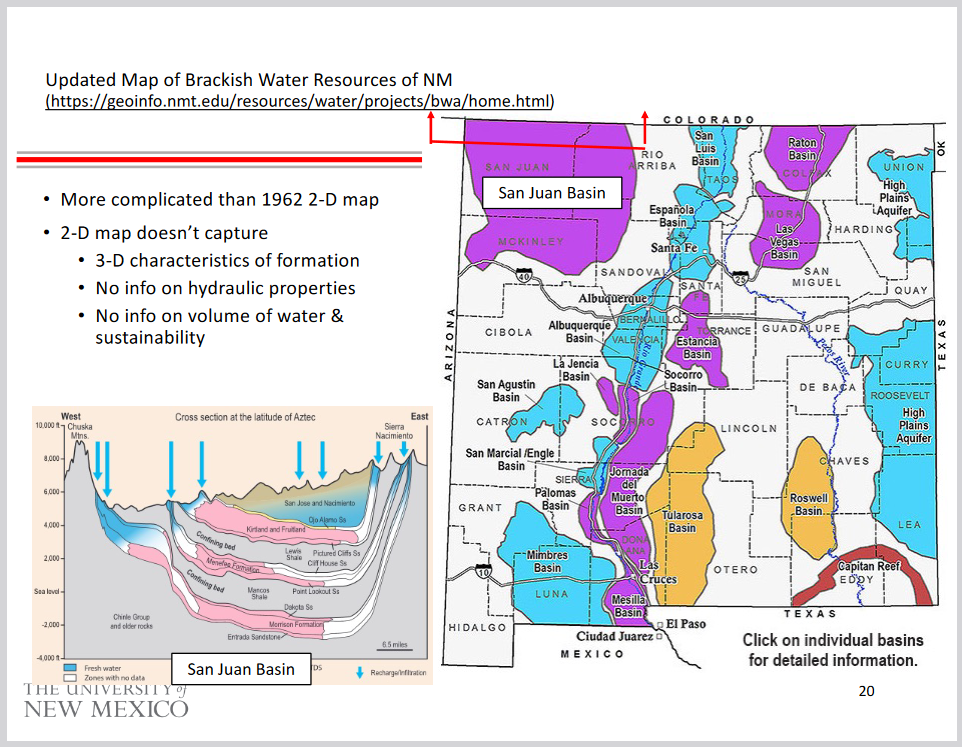
| Some hydrology. The map on the right is a better version of that map which shows up less detailed elsewhere. Maybe the comment should be here or elsewhere but subsidence is always a factor when pumping anything from a well. |
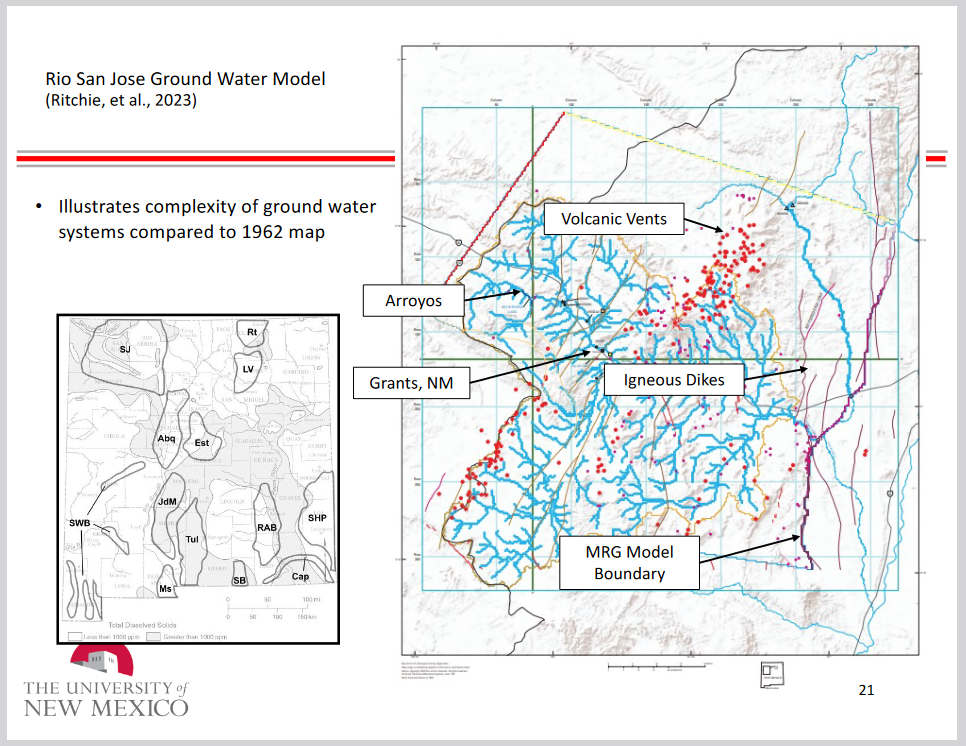
| Works better in 3D |
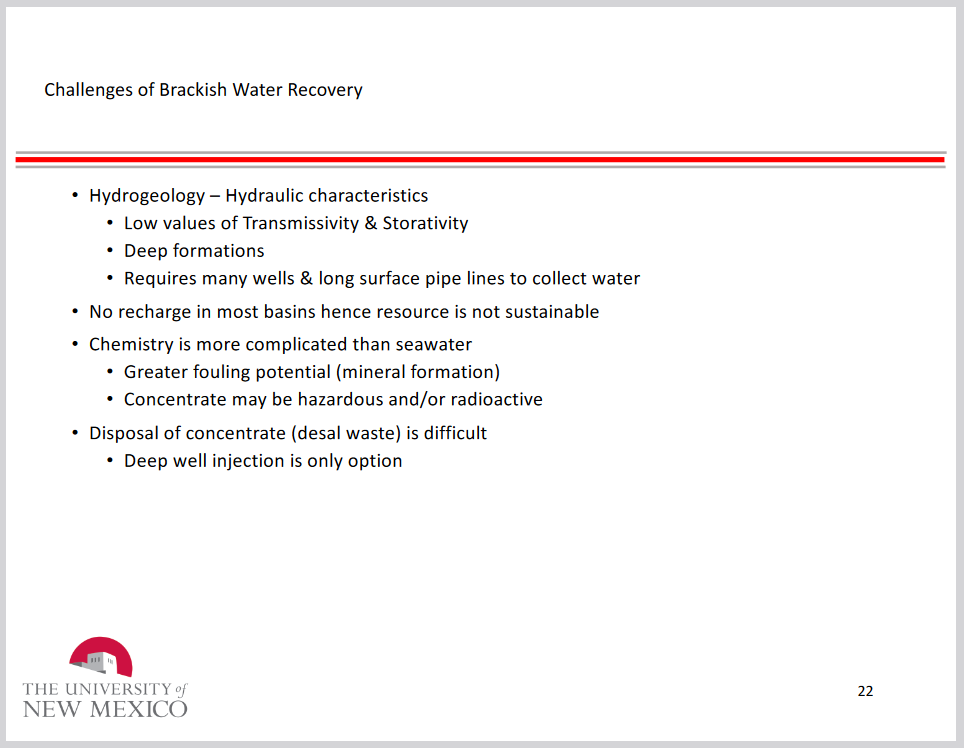
| It is always best to utilize the waste product if you can figure out how to do it. |
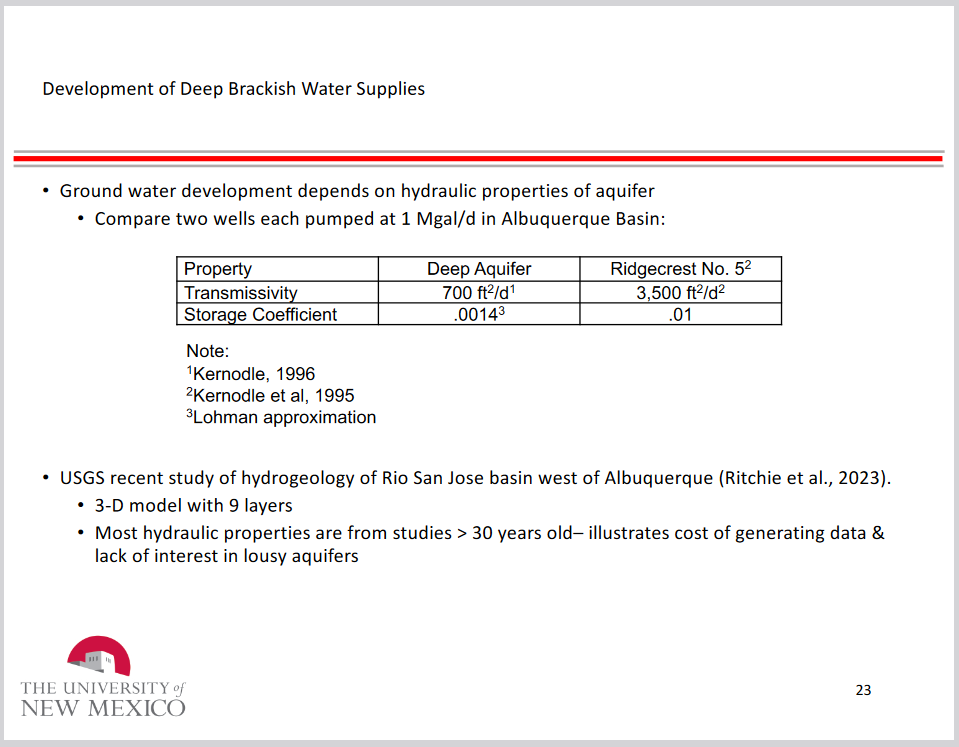
| No need to learn hydrology but what is important is that with depth, the pressure goes up and the ability of a formation to store water (storage coefficient) or flow to where it is uplifted (transmissivity) goes down. But there also is shallow brackish water that is not under as much pressure. |

| Trying to look at the economics of a deep brackish-water well field. “Confined” means no inflow. So you have a finite amount of water to work with. The little graphs on the right show on the top the drawdown of that particular well over time and on the bottom after one year the drawdown by distance from the well. It is useful to remember that the area involved increased with the square of the distance from the well. |
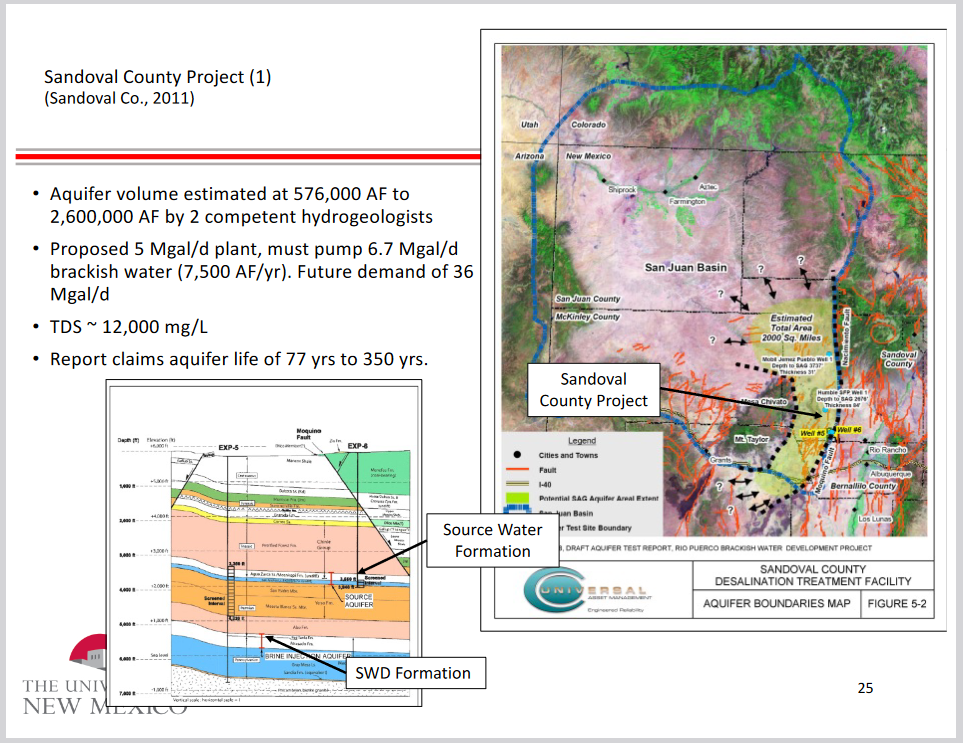
| I am personally familiar with this well. One approach is to allow communities to decide if a given water source is satisfactory or not. The negative is communities might accept a limited supply on the assumption that the public will bail them out in the future. |
| This is an important point. Can you develop a community based on a 75-year water supply that you know will run dry in approximately 75 years? Ideally, you want to have multiple sources of water for a city. Groundwater, whether it is brackish or fresh, can be problematic. However, many cities do depend on groundwater. |
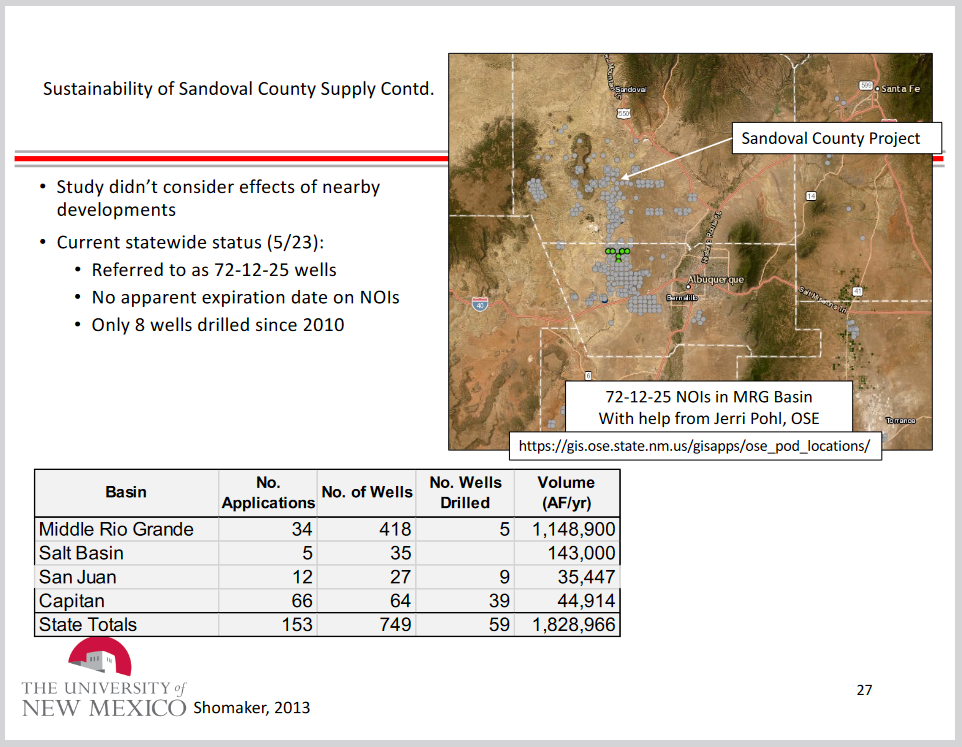
| This just discusses what happened when NM changed the law and there was a rush to get in before the change. The above shows that there were a very large number of NOI or Notices of Intent (under statute 72-12-25) that in theory would provide a very large amount of water. Would any of these wells be economic? Only a small number have been drilled. Since the change, it is unlikely that any deep brackish water wells could be permitted. But in the same way, the law was changed, it can be changed back also. |
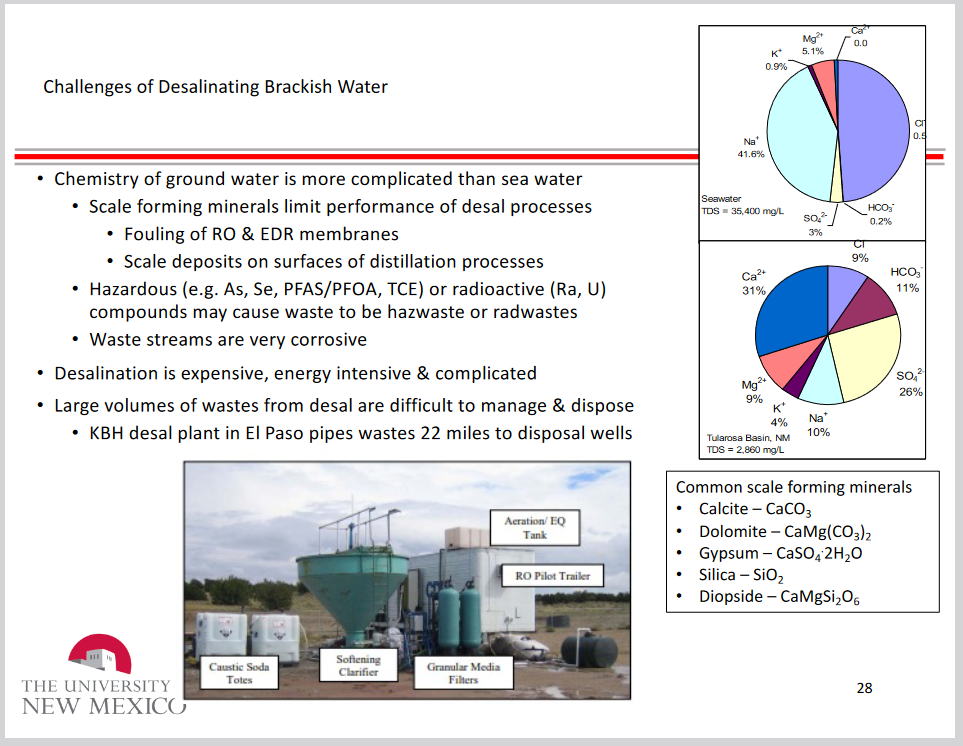
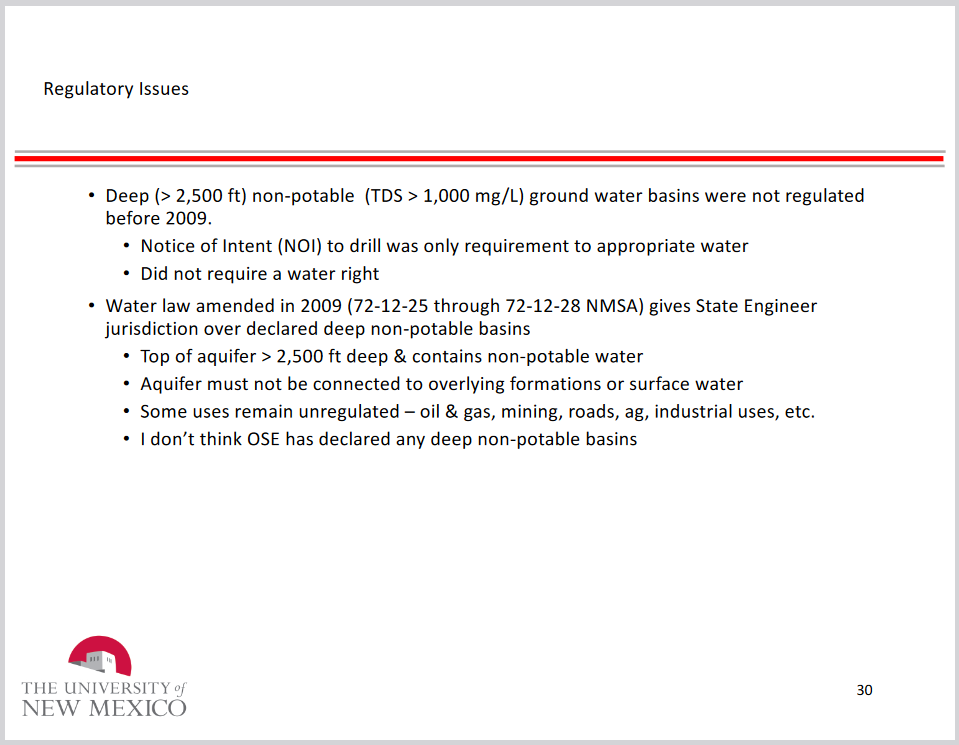
| The requirement that there be no outlet is difficult to show but very important because if that requirement is not met, you are pumping water that would naturally find its way (albeit later} to an aquifer or stream. |

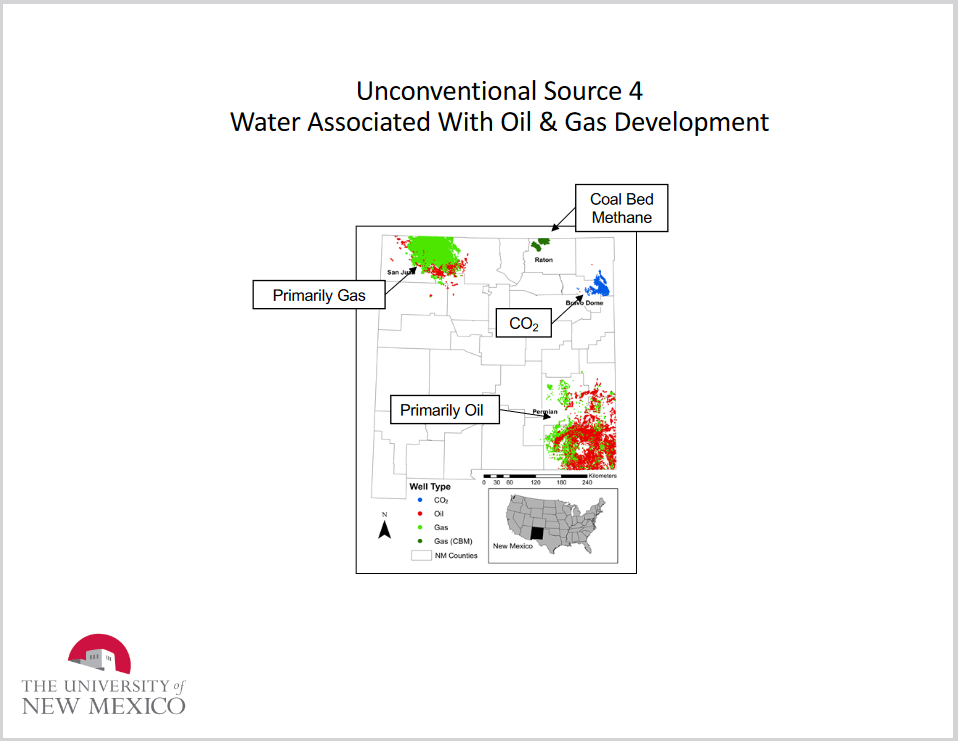
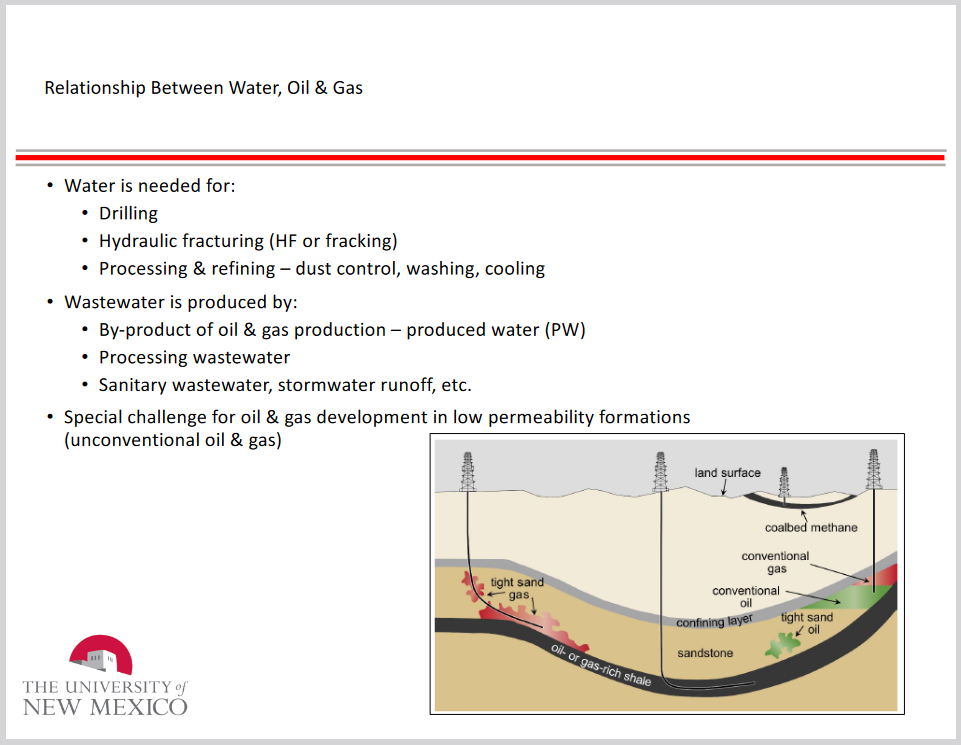
Here is an input-output schematic.
|
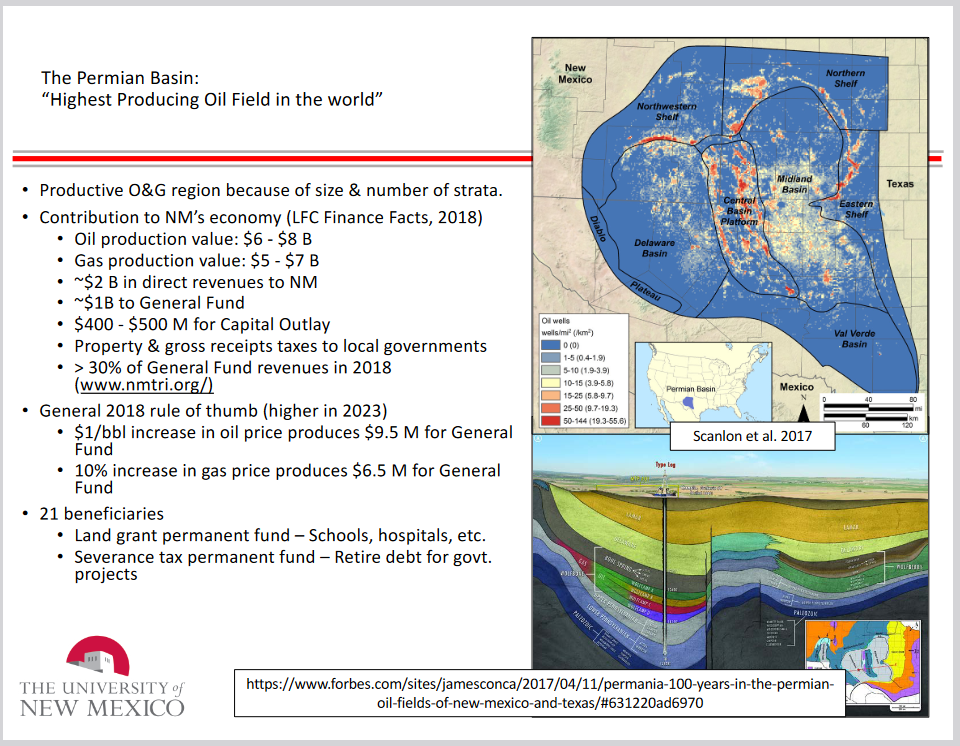
| An updated analysis of the contribution to state and local government in NM can be found at https://cdn.ymaws.com/www.nmtri.org/resource/resmgr/studies_and_reports/FY_23_Final_Report.pdf. Plus you need to add the contribution to the private economy, |
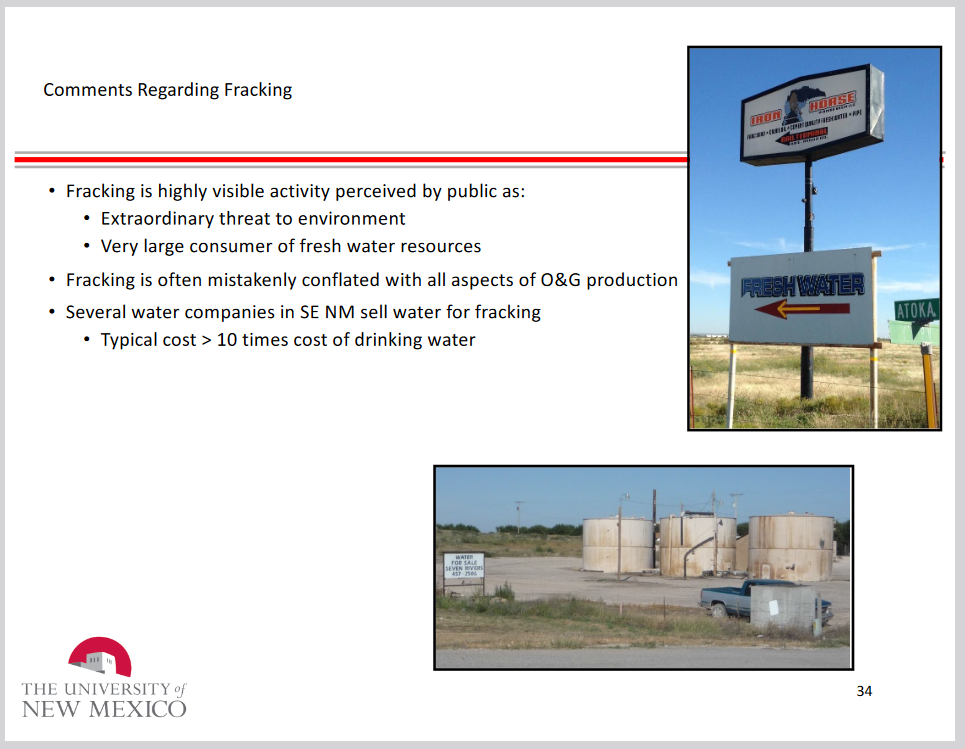
| The cost is high due to the fracking water needing to be shipped by truck. |

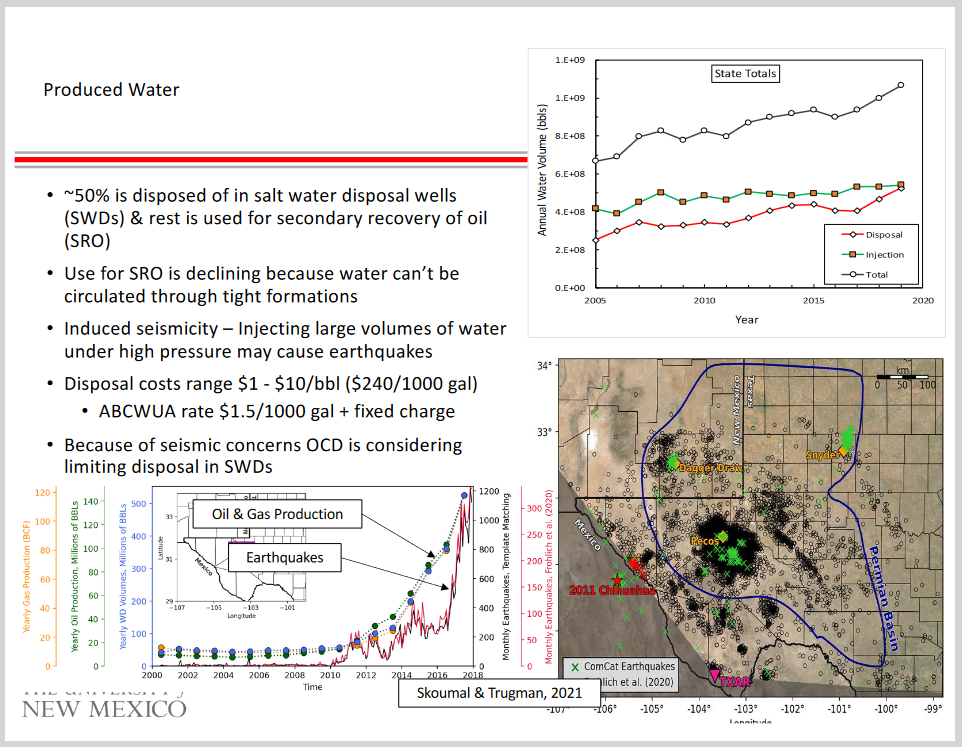
| Secondary recovery is by flooding |
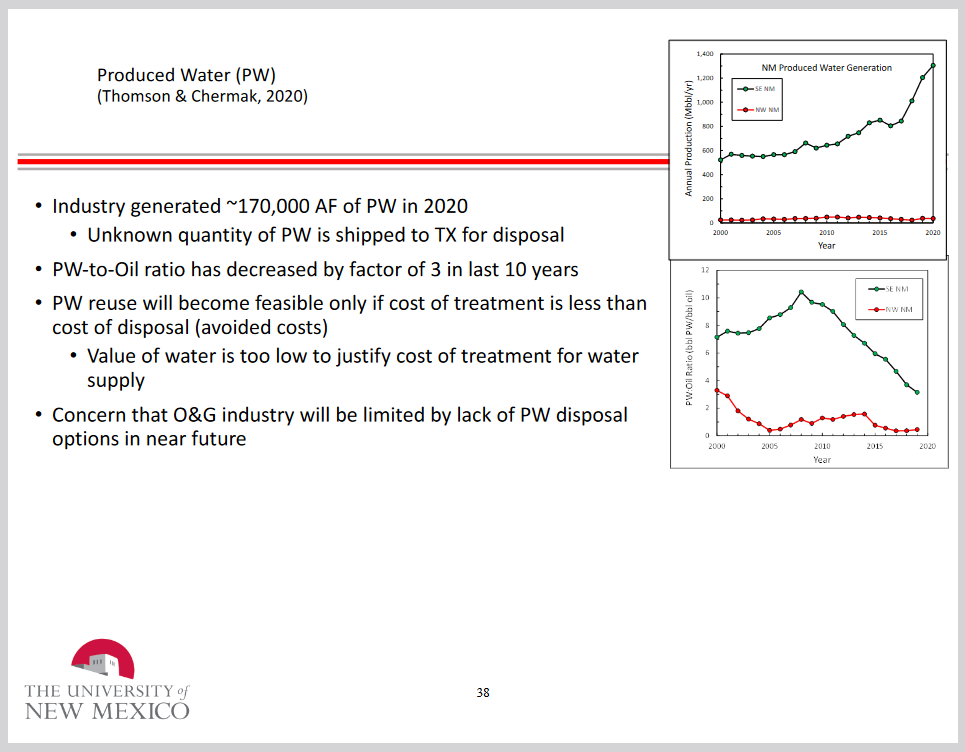 <imgsrc=”https://econcurrents.com/wp-content/uploads/2024/06/Thomson-39.png”/>
<imgsrc=”https://econcurrents.com/wp-content/uploads/2024/06/Thomson-39.png”/> 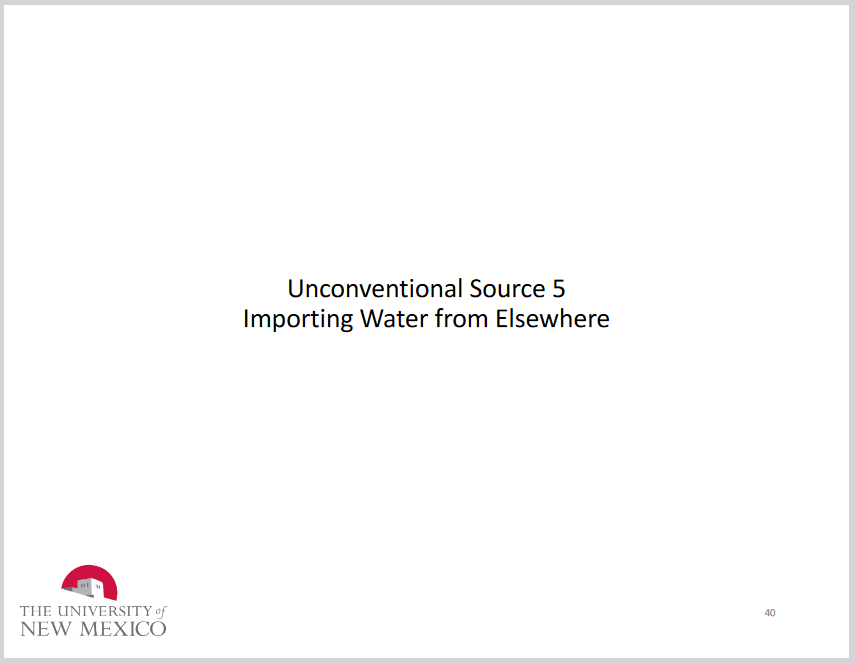
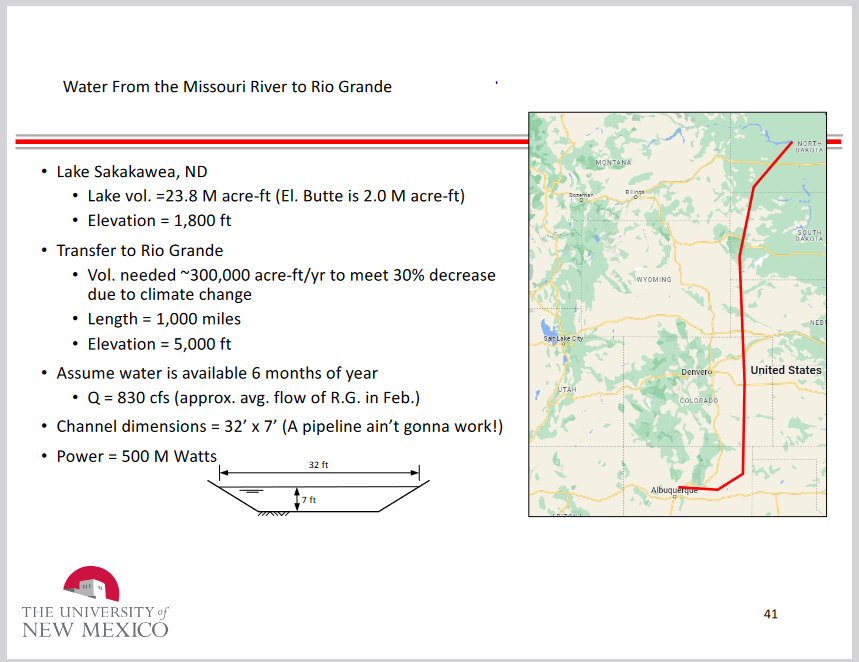
| Actually, a 30% decline is I think 600,000 acre feet. |

| The Atchafalaya River is a distributary of the Mississippi and Red Rivers. |
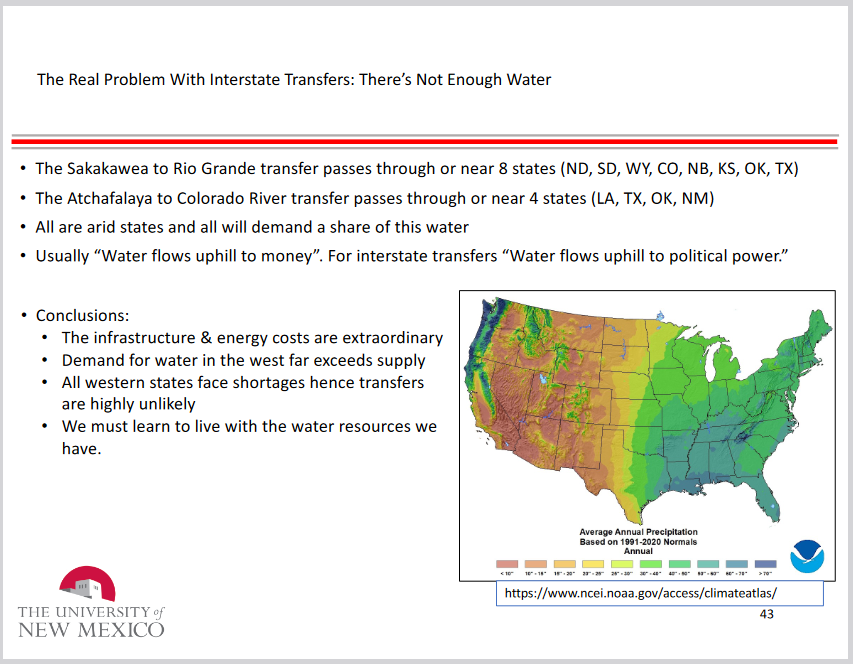

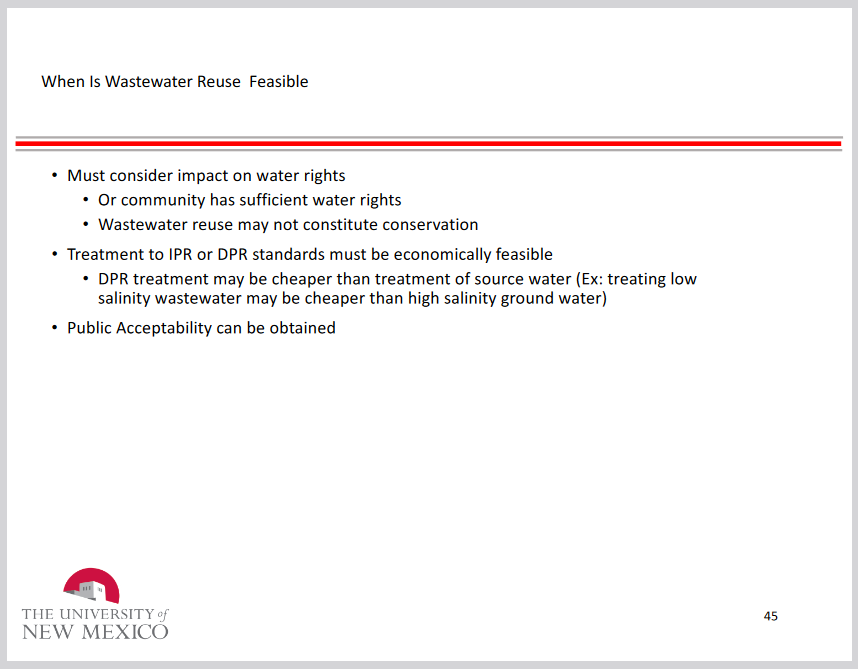
| In the above, the use of treated effluent does not create more water since it would otherwise recharge an aquifer or stream but it might save energy since it would be reduced in quality if returned to a stream. DPR and IPR stand for Direct and Indirect conversion of treated effluent to potable water. The Indirect in some cases is a marsh that aerates the treated effluent. When looking at water, one needs to also consider the energy consumption of the various strategies (and the generated Greenhouse Gases ( GHG). Water and energy are very interconnected. |
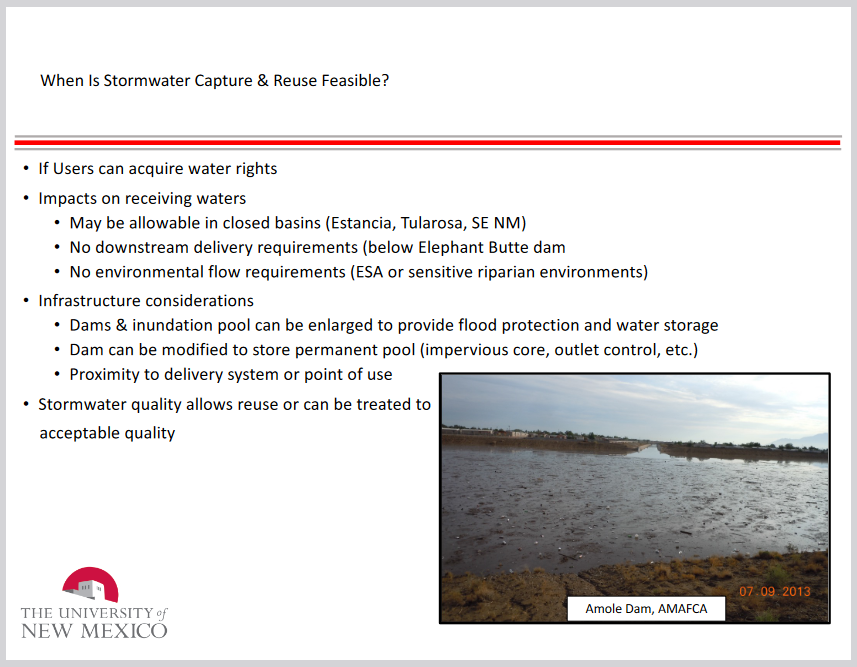
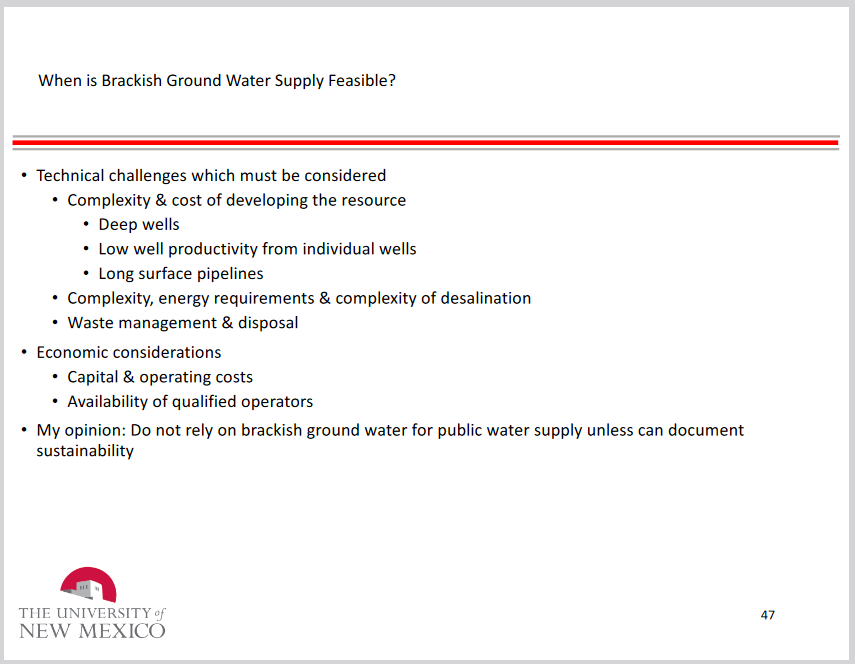
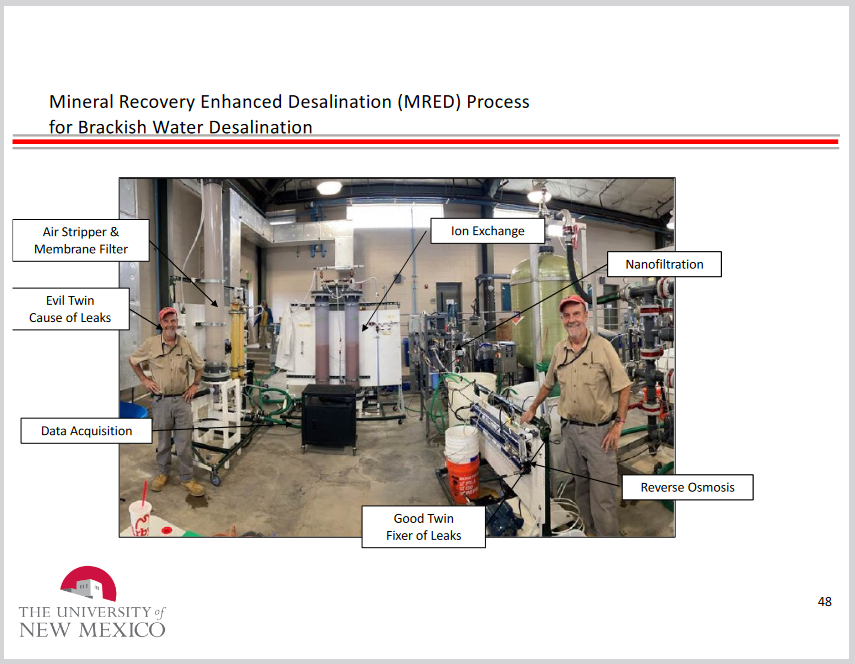
| Hmm, Dr. Thomson is all over the place. |
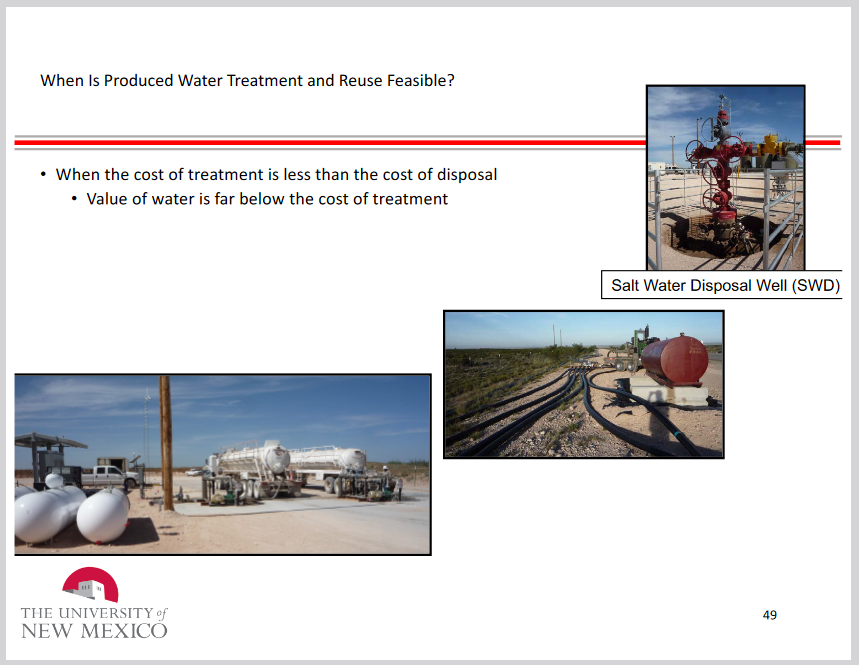
| Dr. Thomson makes the valid point that oil and gas companies look at the reuse of oilfield water as a cost-saving device to reduce the cost of disposal. But it is more complicated than that. But the key takeaway is that the revenue potential of treated oilfield water is not the driver of the reuse of oilfield -water is a way to reuse disposal costs. However it becomes complicated due to the use of water in their oilfield operation for fracking and for water flooding (secondary recovery). |

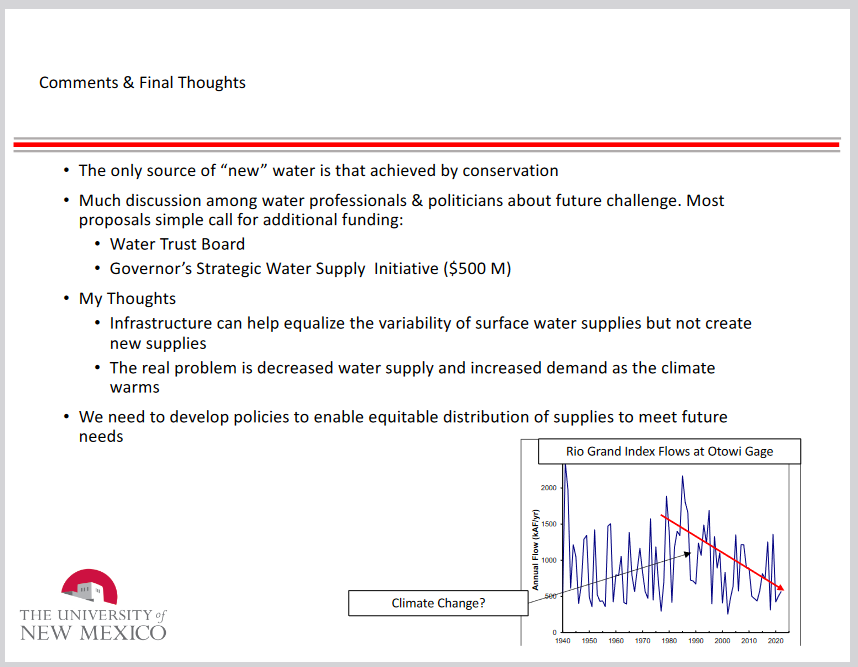
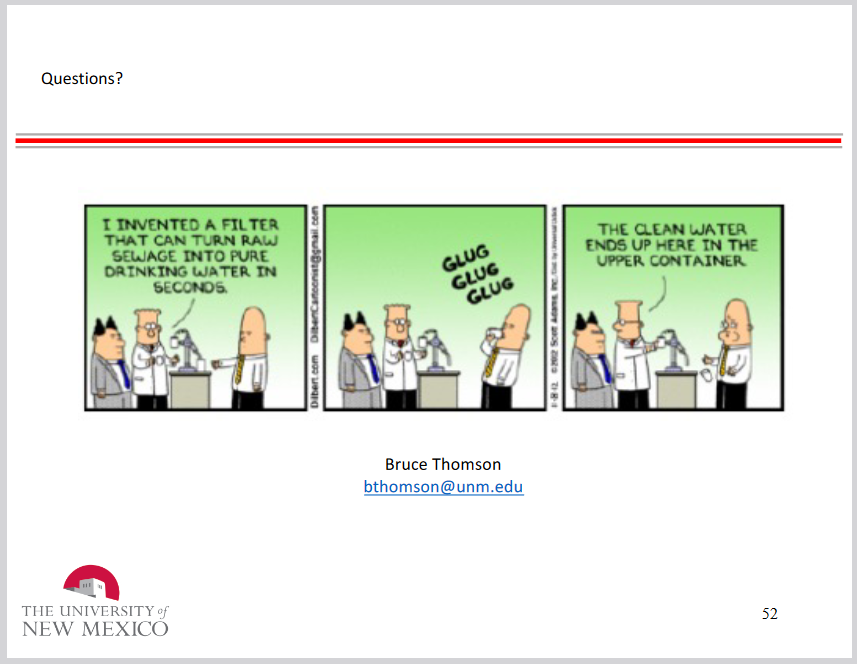

–
More By This Author:
The China/Russia AxisWhat Happened To The Asian Century?
EIA Provides Information On The U.S. Oil Reserves – It Is Looking Pretty Good
Comments
Please wait...
Comment posted successfully
No Thumbs up yet!




